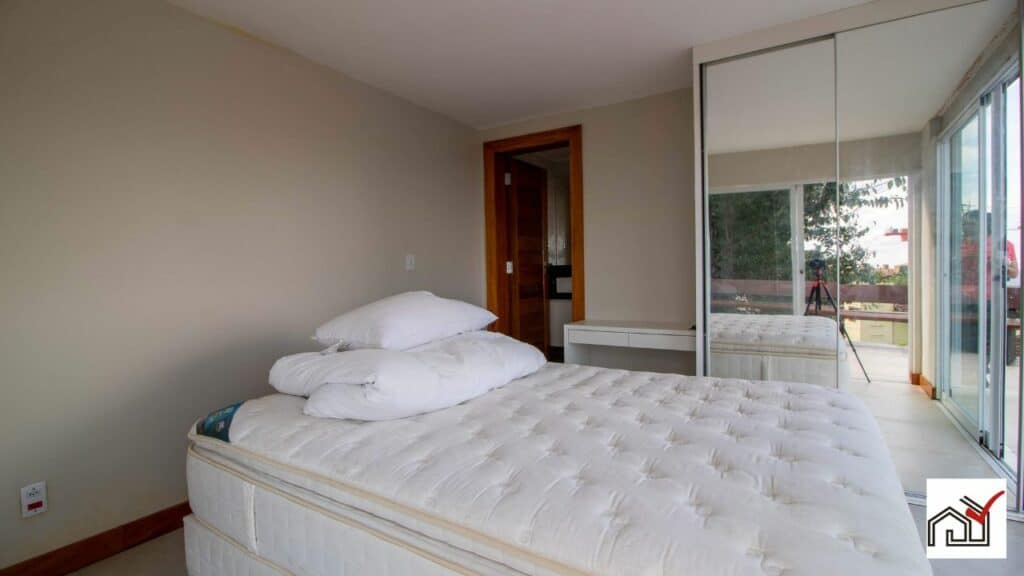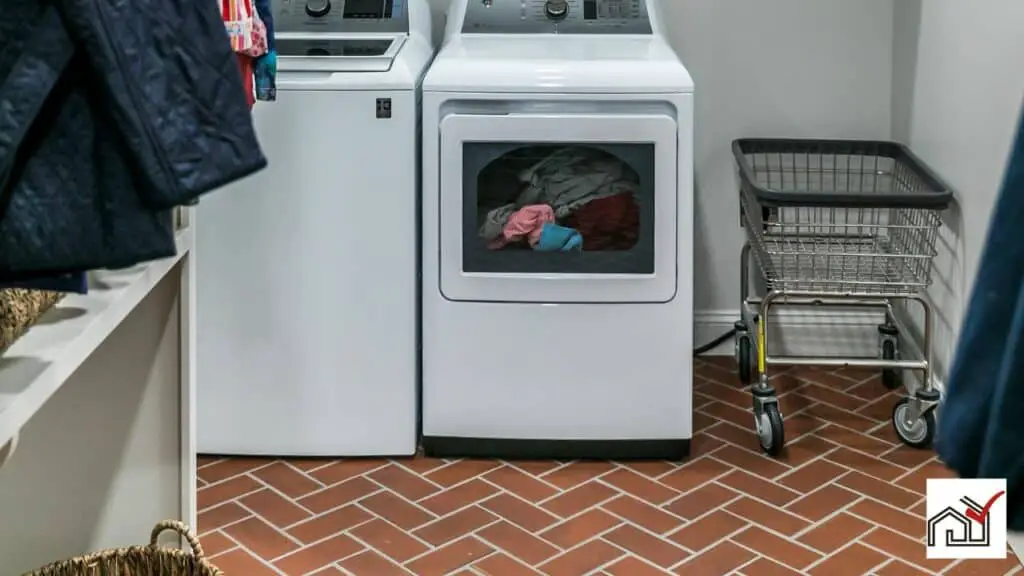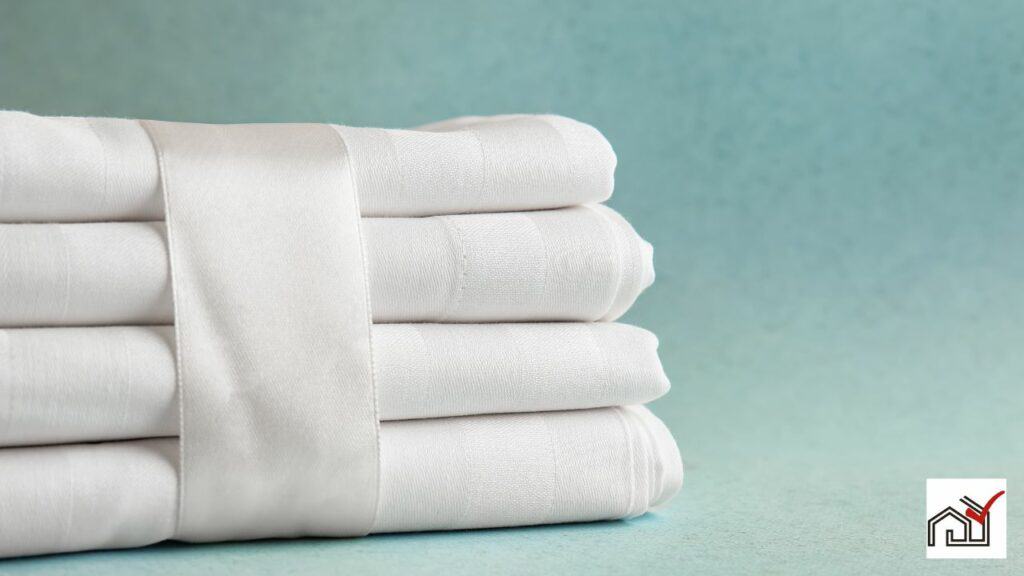Beds do not always need a box spring. Traditionally, box springs have been used to support mattresses, absorb shock, and improve airflow. Today's mattresses, like memory foam and latex, may not require a box spring.
Many modern bed frames, such as platforms or slats, provide enough support on their own. It is important to consider the type of mattress, personal comfort, and manufacturer's advice when deciding if a box spring is necessary.
Understanding Box Springs
Box springs are typically used with innerspring mattresses to provide support and extend mattress life. A box spring is a bed base with a wooden frame, cloth covering, and springs or metal rods. It sits between the mattress and bed frame, distributing weight, absorbing shock, and minimizing mattress wear.
In combination with an innerspring mattress, a box spring enhances comfort by reducing motion transfer and preventing mattress sagging, thus contributing to the mattress's durability.
However, bed design innovations have introduced alternatives like platform bed frames, which can eliminate the need for a box spring. These frames feature a solid base or wooden slats that are close enough to support most types of mattresses. Slats should be strong and correctly spaced to avoid sagging, especially important for foam mattresses that need a stable base.
Metal bed frames are another option that doesn't require a box spring. They support the mattress directly and are suitable for those who prefer a minimalist design or need extra storage space.
It's crucial to check the mattress warranty, as some require a box spring or approved foundation for valid support and to maintain warranty coverage.
The Role of Box Springs
Box springs provide a firm and level foundation for innerspring mattresses, which is essential for their support and longevity. They are designed to work with these mattresses to evenly distribute weight and prevent sagging, contributing to comfort and extended mattress life.
Using a box spring is recommended by many manufacturers for innerspring mattresses to fulfill warranty requirements. It absorbs shocks and reduces mattress wear, enhancing durability.
Additionally, box springs promote airflow under the mattress, helping prevent the buildup of mold and mildew due to moisture. They also raise the mattress height, making it easier to get in and out of bed, which can be beneficial for some individuals.
While platform beds can replace box springs, those with innerspring mattresses or a preference for a higher bed might still prefer a box spring. It remains a useful component in many sleep setups, especially with innerspring mattresses.
Mattress Compatibility
Mattress compatibility is important for determining if you need a box spring. Innerspring mattresses work well with box springs to distribute weight and prevent sagging. Foam mattresses, like memory foam and latex, need a solid foundation, so a platform bed is often better. Adjustable bed frames are a good fit for foam mattresses and don't require a box spring.
It's crucial to use the right foundation to avoid damaging your mattress and voiding the warranty. Check the manufacturer's recommendations to make sure you're using the proper support for your mattress.
Whether you need a box spring depends on the mattress and bed type.
Alternatives to Box Springs
Several alternatives to box springs can support your mattress effectively.
Platform beds are a solid choice with a built-in base, often with extra storage, and do not require a box spring. They work well with memory foam and latex mattresses and offer a modern look.
Adjustable beds can take the place of box springs and allow for custom bed positioning, which may aid those with certain health conditions. These beds are suitable for foam and latex mattresses.
A solid base foundation is a minimalist option that provides a flat, firm surface, ideal for memory foam and latex mattresses to prevent sagging.
Bunkie boards and wooden slat supports are straightforward solutions that offer support and improve mattress ventilation. Bunkie boards reinforce stability in bunk beds and sofa beds, while wooden slats are suitable for various bed frames, including metal.
Each of these alternatives can replace box springs to accommodate different preferences and bed types.
Pros and Cons Evaluated
Box springs can improve support for innerspring mattresses by absorbing shock, which may extend the mattress's life and aid in cooler sleep by increasing airflow. However, they are not necessary for memory foam or latex mattresses, which require solid support. Over time, box springs can wear out, causing an uneven sleeping surface.
Modern bed frames like platform beds often provide sufficient support without a box spring, and they can be more affordable as they remove the need to buy a separate box spring. Box springs are also incompatible with adjustable bed frames, which offer flexible support.
Making the Right Choice
Choose a bed foundation that matches your mattress type and personal comfort. Not every new mattress needs a box spring. Follow the manufacturer's recommendations to make the right choice. Many modern mattresses work well with different frames, like platform beds or those with solid wooden slats.
Box springs are often best for innerspring mattresses, as they absorb shock and reduce mattress wear. This can lead to better sleep comfort. Memory foam and latex mattresses typically require a firmer base, which provides better support and doesn't compromise their comfort features.
Always review your mattress warranty. Some warranties only remain valid with a specific foundation type or box spring. Ignoring this can void your warranty if the wrong foundation causes early mattress damage.
While newer mattress types decrease the need for box springs, pick a foundation based on your specific mattress, comfort needs, and expected durability. The right foundation supports your mattress and can prolong its life by minimizing wear.





